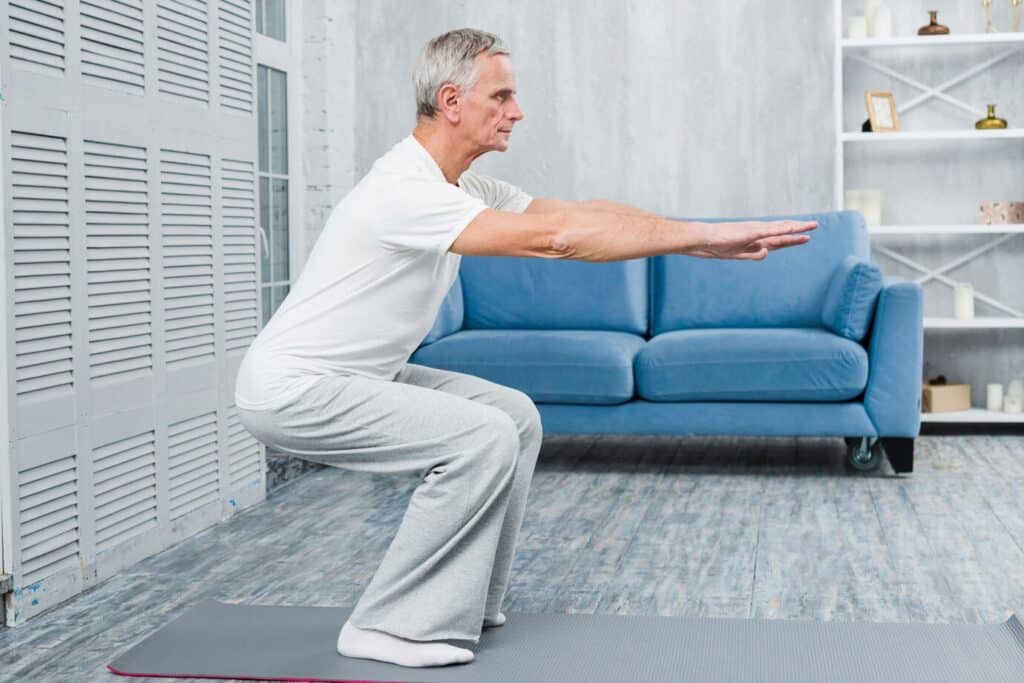Enjoying Retirement: A Purposeful and Joyful Chapter
Retirement is more than just a break from the workforce—it’s an opportunity to thrive. Enjoying retirement means embracing every day with intention, connection, and passion. At Westmont of Pinole in Pinole, CA, this new chapter is filled with possibilities for learning, growth, and joy.
Whether you’re discovering how to enjoy life after retirement, diving into creative hobbies, or lending a helping hand through volunteer work, there are countless ways to make this stage of life truly fulfilling. With the right mindset and support, you can find your rhythm and live a life rich with meaning and purpose.
Maintain Strong Social Connections
As you shift into retirement, maintaining strong social connections can significantly enhance your overall happiness and well-being. Nurturing friendship circles and engaging in social gatherings fosters a sense of belonging. Attend community events and local meetups to connect with like-minded individuals, while also strengthening family connections through shared activities. Seek out peer support by joining social clubs or participating in collaborative projects. These networking opportunities not only enrich your life but also allow you to give back, serving others in meaningful ways. Embrace the joy of togetherness, knowing that your contributions can make a difference. By prioritizing these connections, you’ll cultivate a fulfilling and purpose-driven retirement that uplifts both yourself and those around you. Building healthy relationships is integral to overall quality of life.
Establish a Structured Daily Routine
Creating a structured daily routine can genuinely transform your retirement experience. By incorporating regular physical activities and consistent wake-up and sleep times, you’ll not only boost your health but also enhance your sense of purpose. Embracing this structure helps prevent aimlessness, allowing you to make the most of each day. Additionally, incorporating physical exercise for seniors into your routine can significantly improve both your physical and cognitive health.
Benefits of Daily Structure
Structure fosters clarity and productivity, which are essential for leading a purposeful life after retirement. Daily routines support mental health, reduce stress, and boost overall life satisfaction. Consider starting your day with gratitude journaling, followed by a healthy breakfast and a walk. This steady rhythm creates a sense of security and direction in your golden years. Engaging in various social activities can further help you maintain a balanced lifestyle.
Incorporate Physical Activities
Incorporating physical activities into your daily routine can significantly enhance your overall well-being and enjoyment of retirement. Group fitness, dance lessons, and nature walks are excellent options for staying active. These activities offer social engagement and physical benefits, while reinforcing the enjoyment of retirement, meaning many seek a balance of vitality, community, and joy. Also, consider strength-building exercises to improve strength and balance.
Enhance Sense of Purpose
Purpose is what transforms routine into ritual. Volunteering, mentoring, or simply caring for a garden can create a sense of daily fulfillment. Structure allows you to plan and prioritize things that bring you happiness and meaning. Prioritize wellness with nutrient-rich meals, and carve out time to reflect, connect, and create. This is how to cultivate a purposeful life after retirement that uplifts your spirit.
Stay Mentally and Physically Active
One of the most effective ways of enjoying retirement is to remain both mentally and physically active. Movement and mental stimulation keep you energized and joyful. It’s not just about keeping busy—it’s about staying vibrant.
Engage in Regular Exercise
Exercise is a cornerstone of a healthy retirement. Engage in yoga, walking groups, or aquatic aerobics to strengthen your body and socialize. The more you move, the better you feel. This helps reduce risks of disease, boosts mood, and encourages deeper engagement with the community. Your health is key to discovering how to enjoy life after retirement.
Pursue Lifelong Learning Opportunities
Feed your curiosity by exploring lifelong learning options. Take online courses, join book clubs, or attend local history lectures. These efforts boost mental health and encourage meaningful interactions. Here are just a few ideas:
| Learning Opportunity | Example Activity |
| Online Courses | Language learning |
| Community Workshops | Technology training |
| Educational Travel | Cultural immersion |
| Mentorship Programs | Skill development |
Pursuing knowledge is one of the best retirement advice from retirees across generations. Stay curious and engaged!
Stimulate Your Mind Daily
Mental stimulation is vital for cognitive health. Solve puzzles, write stories, try art classes, or even learn to play an instrument. The more you challenge your mind, the more empowered and enriched you’ll feel. Engage in daily meditation and mindfulness to center your focus and improve memory and mood.

Explore New Hobbies and Interests
Retirement is a beautiful time to dive into your passions. Painting, music, photography, or creative writing can awaken a sense of wonder and accomplishment. Join local clubs, take online tutorials, or simply explore at home. Not sure where to begin? Check out 101 Things to Do When You Retire for inspiration.
Gardening can offer both therapeutic and health benefits, while learning a new language sharpens the mind and opens cultural doors. Don’t forget the power of community-based activities to share your interests and connect with others.
Embrace Volunteering and Giving Back
Many retirees discover deep joy and meaning through giving back. Volunteer at local schools, hospitals, or environmental organizations. Your time and experience can have a significant impact on others, and volunteering promotes emotional wellness, reduces isolation, and boosts life satisfaction.
| Volunteer Type | Focus Area | Benefits |
| Tutoring | Education | Empower youth |
| Community Cleanups | Environment | Beautify neighborhoods |
| Hospital Assistance | Healthcare | Support patients |
You might also explore volunteering platforms like VolunteerMatch or Idealist to find opportunities that align with your values and skills.
Set Personal Goals and Seek Support
Setting goals provides structure, motivation, and a sense of purpose. Whether you want to walk 10,000 steps a day, learn to bake, or visit every National Park, goals give direction to your days.
- Set SMART goals (Specific, Measurable, Achievable, Relevant, Time-bound).
- Revisit and revise them regularly.
- Join groups or clubs for accountability.
- Celebrate milestones!
Connect with loved ones or professionals who can support and encourage you on your journey. Retirement can be a powerful time of transformation and contribution when guided by your values and aspirations.
A New Beginning Full of Meaning
Think of retirement not as a closing chapter, but as a canvas ready for bold new strokes. Whether you’re chasing long-forgotten dreams, traveling with friends, or exploring new hobbies, enjoying retirement is entirely within reach. At Westmont of Pinole, you can tap into resources that help you live your best life—with structure, support, and joy.
Whether you’re embracing the enjoyment of retirement meaning for the first time or rediscovering your passions, now is the time to thrive. Make new friends, explore new paths, and fill your days with purpose. Remember, the best retirement advice from retirees often boils down to this: stay active, stay curious, and stay connected.
If you’d like to learn more about how we can support your retirement journey, call us at 510-758-1122 or schedule a tour.
Discover the level of care you or your family member requires. What Level of Care Do You Need?
Frequently Asked Questions
What is the happiest retirement age?
Many studies suggest the happiest retirement age is around 65, when people are eligible for full Social Security benefits. At this age, individuals often have fewer financial worries and more freedom to pursue hobbies and travel. Retiring at 65 also tends to be associated with better physical and mental health compared to retiring much later. However, happiness in retirement varies based on personal goals, health, and financial preparedness. Ultimately, the happiest retirement age is the one that aligns with your lifestyle and priorities.
How do you say “enjoy your retirement”?
You can say “enjoy your retirement” in many heartfelt ways, depending on the tone and relationship. Phrases like “Wishing you a joyful and fulfilling retirement!” or “Congrats on your retirement—enjoy every moment!” are thoughtful. For something more casual, try “You’ve earned it—enjoy your retirement!” If you want to sound more formal, you might say, “Best wishes as you embark on this new chapter.” Choose wording that feels genuine and suits the person you’re addressing.
What is the $1000 a month rule for retirement?
The “$ 1,000 a month rule” refers to the idea that you need $240,000 to generate $ 1,000 in monthly retirement income. This rule is based on the 5% annual withdrawal rate from savings or investments. It helps people estimate how much they need to save to cover specific income goals in retirement. However, the 5% rule can be aggressive, and many advisors recommend a withdrawal rate of 4% or even 3.5%. This rule is more of a starting point than a fixed plan, so individual circumstances matter.
What is the 3-rule in retirement?
The “3% rule” in retirement isn’t as widely known, but it may refer to spending no more than 3% of your retirement savings annually. It’s a conservative version of the 4% rule, aiming to reduce the risk of running out of money. This rule is often used by those who want their savings to last longer, especially in uncertain markets. Another interpretation could be the “Rule of 3” for retirement happiness—good health, financial security, and meaningful social connections. Either way, it’s about striking a balance between sustainability and well-being in retirement.








